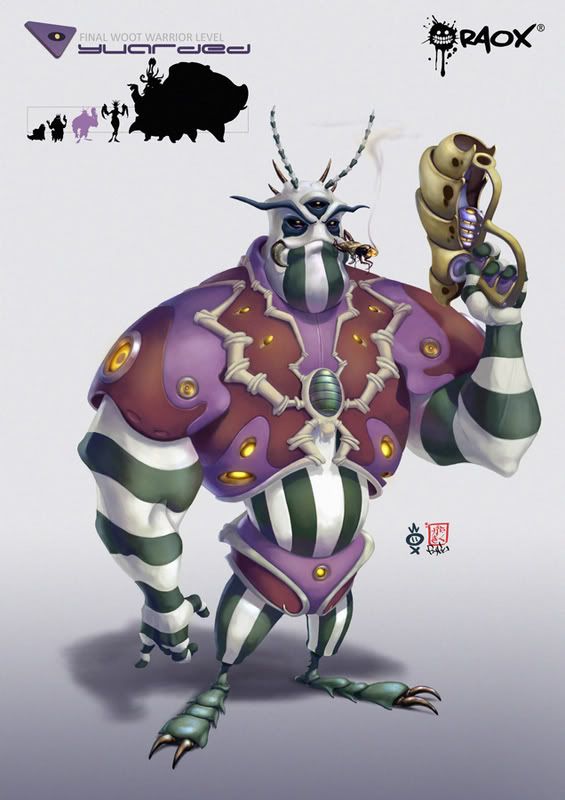 Here's the dino-bird design I was telling Mike Corriero about. This painting's purpose is twofold. First, it satisfied my desire to paint a blunt-headed reptile, which I've had ever since viewing this dragon design by Carlo Arellano: http://chainsawart.blogspot.com/2008/03/dragons-and-demons.html. Secondly, it gave me a chance to experiment with new textures and techniques. The textures on the cheek, snout, and legs are photo overlays, but the rest of the textures are hand painted. A reference image of a turkey was particularly informative for rendering the wattle and the feathers of the chest.
Here's the dino-bird design I was telling Mike Corriero about. This painting's purpose is twofold. First, it satisfied my desire to paint a blunt-headed reptile, which I've had ever since viewing this dragon design by Carlo Arellano: http://chainsawart.blogspot.com/2008/03/dragons-and-demons.html. Secondly, it gave me a chance to experiment with new textures and techniques. The textures on the cheek, snout, and legs are photo overlays, but the rest of the textures are hand painted. A reference image of a turkey was particularly informative for rendering the wattle and the feathers of the chest.
The Madagascan Cockatrice, first described by the Greek zoologist Gallinicus in 503 BCE, is a medium sized non-avian theropod. When standing in its usual semi-erect position, it measures about four feet in height, and is about forty pounds in weight. It is the largest predator on Madagascar, except for the Nile crocodile. A quick and intelligent predator, it feeds on anything it can catch. Madagascan Cockatrices are normally solitary, but come together to breed around late August every year. The showy males are more brightly colored than the females, but females grow 25% larger than their mates. Both males and females take part in the raising of young, but infant mortality is high nevertheless.
Because of poaching and habitat destruction, the numbers of the Madagascan Cockatrice are dwindling. Along with the steppe Ceratopsians of northern Eurasia and the marsh Hadrosaurs of Argentina, the half dozen or so species of Cockatrices are the only surviving non-avian dinosaurs. We must take action to save these relics of a lost age.








































